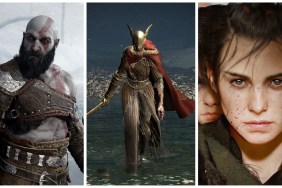Choose your own adventure.
The PS3 version of Oblivion is finally here, and it’s leading people to make a lot of comparisons. Easy comparisons to make, since the game is nearly identical.
Like most adult geeks reared on Dungeons and Dragons, I often find myself a bit disconnected when faced with the endless waves of Japanese RPGs that have taken…
-
Huge, complex world
-
Real physics
-
Do whatever you want
-
Unbelievable depth
-
Great graphics
-
Challenge scaling far too pervasive
-
Played it last year










